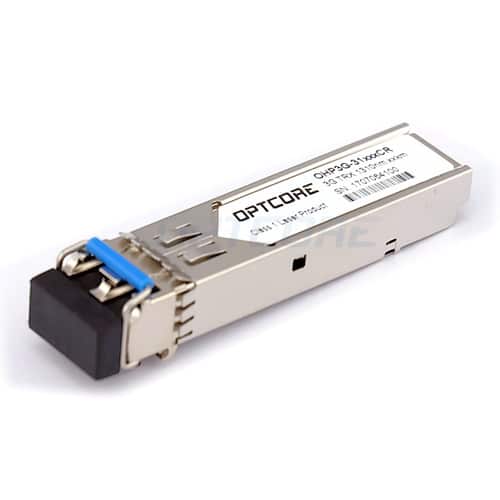
Trend
FTTH can provide users with extremely rich bandwidth, so it has always been considered as an ideal access method. It plays an important role in realizing the information
society and needs to be promoted and constructed on a large scale. The fiber required for FTTH maybe two to three times that of existing coated fiber. In the past, due to the
the high cost of FTTH, the lack of broadband video services and broadband content, FTTH has not yet been mentioned on the agenda, only a small number of trials. Due
to the advancement of optoelectronic devices, the price of optical transceiver modules and optical fibers has been greatly reduced; coupled with the relaxation of broadband
content, the practical process of FTTH has been accelerated.
Developed countries do not have the same view on FTTH: AT&T in the United States believes that the FTTH market is relatively small, and declared it at 0F62003: FTTH will
only have a market after 20-50 years. US operators Verizon and Sprint are more active, using FTTH to transform the network within 10-12 years. Japan’s NTT developed
FTTH at the earliest and has nearly 2 million users. China’s FTTH is in the pilot phase.
FTTH challenges
The widely used ADSL technology provides certain advantages in providing broadband services.
Compared with FTTH: 1 cheaper 2 use the original copper wire network to make the project construction simple 3 for the transmission of 1Mbps-500kbps film and television
programs can meet the demand. A large number of FTTH promotion is subject to restrictions.
For the broadband business to be developed in the near future, such as online education, online office, conference TV, online games, remote diagnosis, and other two-way
services and HDTV high-definition digital TV, ADSL is difficult to meet the asymmetric uplink and downlink transmission services. Especially HDTV, after compression, its
transmission rate still needs 19.2Mbps. It is being developed with H.264 technology and can be compressed to 5 to 6 Mbps. It is generally considered that the highest
transmission speed string of ADSL guaranteed for QOS is 2 Mbps, and it is still difficult to transmit HDTV. HDTV can be considered the main driving force of FTTH. That is,
when the HDTV service arrives, FTTH is not available.
FTTH solution
There are usually two types of P2P point-to-point and PON passive optical networks.
F2P solution one advantage: each user transmits independently, does not affect each other, and the system changes flexibly; cheap low-speed optoelectronic modules can be
used; the transmission distance is long. Disadvantages: In order to reduce the fiber and pipeline that users directly go to the office, it is necessary to place one active node of
the aggregate user in the user area.
PON solution – advantages: passive network maintenance is simple; in principle, optoelectronic devices and optical fibers can be saved. Disadvantages: expensive high-speed
optoelectronic modules need to be used; electronic modules that distinguish different user distances are needed to avoid conflicts between uplink signals of each user;
transmission distance is shortened by PON ratio; downlink bandwidth of each user is occupied by each other if user bandwidth is obtained When the guarantee is not
guaranteed, it is not only the network expansion but also the replacement of the PON and the replacement of the user module. (According to market prices, PEP is more
economical than PON)
There is a variety of PONs, generally as follows: (1) APON: ATM-PON, suitable for ATM switching networks. (2) BPON: Broadband PON. (3) OPEN: OFP-PON using general
frame processing. (4) EPON: PON using Ethernet technology, GPON is a PON of Gigabit Ethernet. (5) WDM-PON: Wavelength division multiplexing is used to distinguish
the user’s PON. Since the user is related to the wavelength, it is inconvenient to maintain and is rarely used in FTTH.
Wireless access technology is developing rapidly. It can be used as a WLAN IEEE802.11g protocol with a transmission bandwidth of up to 54 Mbps and coverage of more than
100 meters. If the wireless access WLAN is used for user data transmission, including uplink and downlink data and uplink data of the on-demand TV VOD, IEEE 802.11g
can be satisfied for the general user whose uplink is not large. The FTTH using optical fiber mainly solves the downlink transmission of HDTV broadband video, and of
course, it can also include some downlink data when needed. This forms a home network of “fiber to home + wireless access” (FTTH + wireless access). This kind of home
the network is particularly simple if PON is used. Because the PON has no uplink signal, there is no need for ranging electronic modules, and the cost is greatly reduced and
the maintenance is simple. If the user group of the PON is covered by the wireless metropolitan area network WiMAX (1EEE802.16), then it is not necessary to construct a
dedicated WLAN. The use of wireless in the access network is a trend, but the wireless access network still needs to be supported by the fiber optic network adjacent to the
user, which is similar to FTTH. FTTH+ wireless access is the future development trend.
Disclaimer: All information indicated as other sources is transferred from other platforms, the purpose is to convey more information, does not represent the views and
positions of this site. Please contact us if there is any infringement or objection.